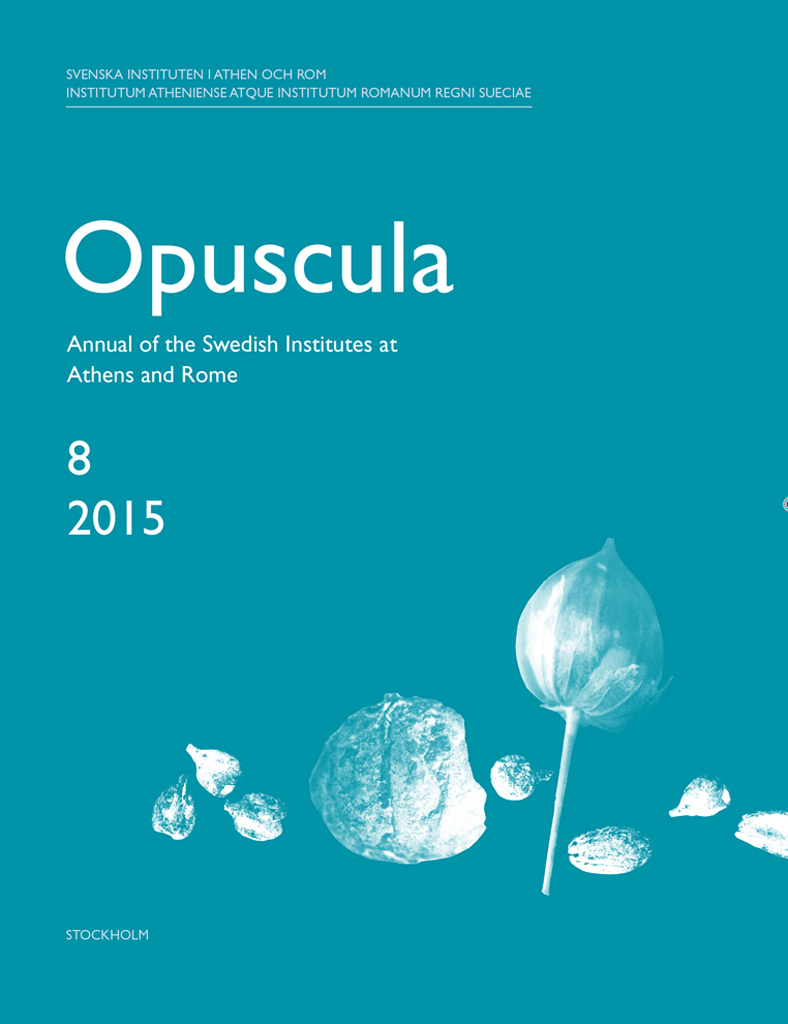All content of Opuscula 12 (2019) is available with open access. Printed edition distributed by Eddy.se AB. Also available at Amazon.com, Adlibris, and Bokus. View volume at ERIH PLUS. Palaepaphos-Skales Tomb 277. More prestigious burials. With an appendix by Maria A. Socratous By Vassos Karageorghis (The Cyprus Institute, Cyprus) & Efstathios Raptou (Cyprus Museum, Cyprus) Abstract Tomb 277 in the Skales cemetery at Palaepaphos, excavated by the Cyprus Department of Antiquities, is among the richest ever found in the south-west of the island. It dates to the Cypro-Geometric III period (c. 900–750 BC) and was used for multiple burials of important members of the Palaepaphian society, namely warriors and important women (priestesses of the Great Goddess?) judging from the abundant offerings of arms and armour as well as gold jewellery respectively (including gold plaques embossed with the head of the Egyptian goddess Hathor). Notable among the offerings are two bronze basins, six small hemispherical bronze bowls, two bronze mace-heads (symbols of authority), a bronze shield of a rare type, and two richly decorated belts of oriental type. We also mention two iron swords and a bronze spearhead. Among the pottery we note the high percentage of Phoenician imports. Both inhumations…
Opuscula 8 (2015) is now available for purchase and free download at Bokorder.se. Also available at Amazon.com, Bokus.com and Adlibris.com. Two new Proto-White Painted ware vases of the pictorial style from Palaepaphos, Cyprus By Vassos Karageorghis & Efstathios Raptou Abstract The publication of two Proto-White Painted ware pictorial style vases found at the necropolis of Palaepaphos-Skales in Cyprus is preceded by a discussion of several issues relating to this style which appeared early in the 11th century BC. In recent years scholars have expressed conflicting views about the origin of the silhouetted pictorial motifs (birds, quadrupeds, human figures etc.), which appear next to the linear geometric decoration on such vases, usually amphorae and kraters. Some have expressed the view that the influence comes from Syria. Here it is proposed that the silhouetted figures of Proto-White Painted ware are derived from a Cypriote style with both local and Aegean characteristics, which developed in the 12th century BC. The pictorial motifs of this style, drawn both in outline and silhouette, are combined with linear geometric motifs, also in panels. In Proto-White Painted ware the pictorial motifs become rare and small. In order to be distinguished from the dominant linear geometric motifs they…


